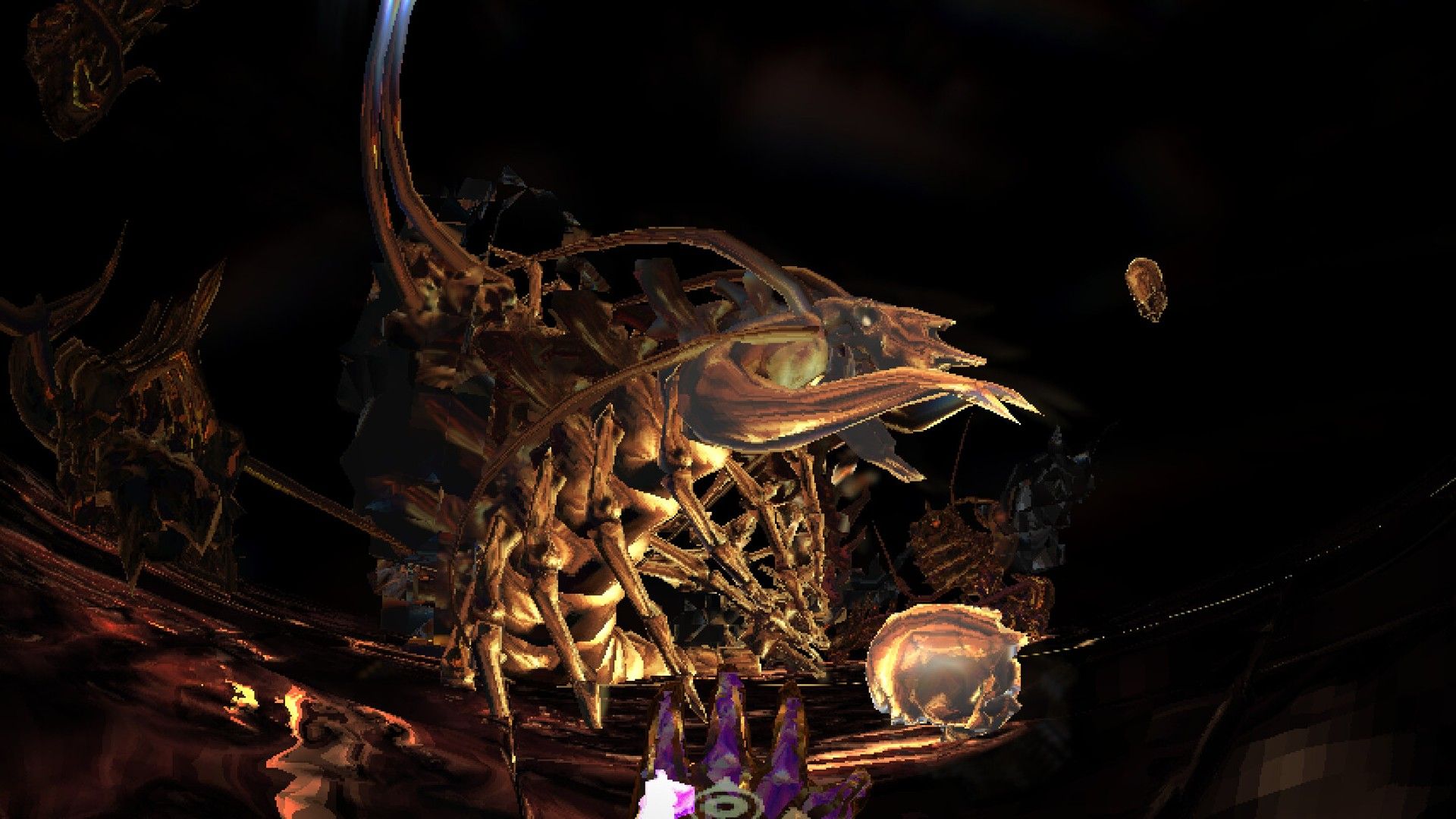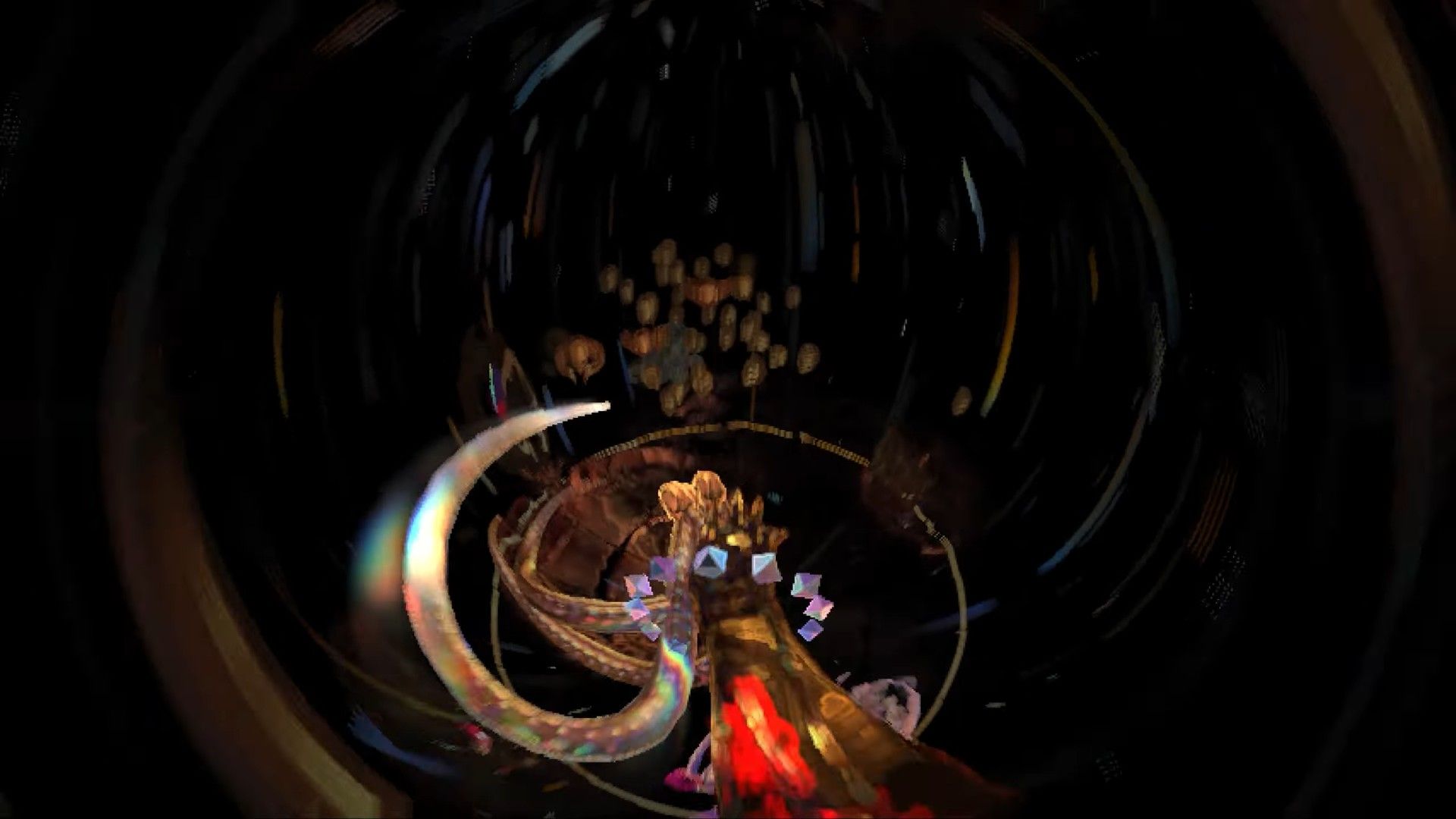While developer Sorath has said that HYPER DEMON isn’t intended to be a direct sequel to its previous breakout hit, Devil Daggers, fans of that game are almost sure to pick up HYPER DEMON as soon as humanly possible. Devil Daggers, a distilled-to-its-essence FPS first released in 2016, was already one of the best indie games people never played, and now Sorath is back with a follow-up that takes the original formula and dials it up to 11. It’s got the same style of one-life runs, where the high score is everything and a single hit spells the end, but its expanded options make it something that feels quite different.
Where Devil Daggers tasked players with surviving as long as possible to earn the biggest score, HYPER DEMON is measured by speed rather than survival. Instead of the seconds ticking up as players get further into the game’s solitary progression, they now tick down from a humble 10, and each kill earns a set amount more (though not to worry – the clock running out doesn’t equal death). This immediately sets HYPER DEMON apart from its predecessor by changing how it rewards play. Crucially, it also means that every run feels jammed with potential, as it sidesteps the more staid opening segments of Devil Daggers and gets right to the good stuff, where players are testing their skill and pushing scores for the leaderboards.
For those who want the more direct indie FPS sequel Devil Daggers deserved, mods might fit the bill; but for those ready to take things to the next level, HYPER DEMON is Sorath’s clear answer. The basic setup is the same, with an arena shrouded by darkness and fairly monotone, skull-themed creatures flying around everywhere, but HYPER DEMON distinguishes itself from the off by making enemies flash when attacking or taking damage, changing color when stunned, and shimmering with ghostly images prior to being teleported into the arena. Anyone with photosensitivity issues will want to steer well clear of this game in its entirety, as it’s a beautiful, pearlescent nightmare to which screenshots can’t do justice.

The basic camera has also undergone a significant shift. While it has a single hand that launches golden projectiles in the center of the screen (a classic enough FPS setup), it allows for up to 180 degrees of vision via what the game terms “spherical projection” – more or less a rounded camera that pulls in a wider field. The FOV can also manually be set on top of this, and the game even has a fantastic “rear view” feature where distinct red outlines of enemies directly behind the player are silhouetted over the action. It’s an overwhelming amount of information upon first launching the game, but HYPER DEMON‘s visual language becomes strikingly clear after an hour or so.
And it’s a good thing that the game reads so well despite its chaos, because much the same way that DOOM Eternal‘s version of combat was different from DOOM 2016, ramping up the speed and maneuverability and wildly increasing available choices, HYPER DEMON takes everything from Devil Daggers and adds to it by the truckload. Movement is paramount. The new air-dash mechanic is crucial, and players dive-bomb straight down as well, leading to potential enemy stuns, yet another new feature. Stuns make enemies easier to kill and sometimes allows them to be used as launchpads.

Players can also get a second chance at staying alive with a well-timed dodge, which acts almost like a parry. Dodging at the last second will slow down time and get the player out of harm’s way (at least in theory). Powerups are still present, slowing down time on pickup, but they can also be grabbed using HYPER DEMON‘s grab/laser button, which will allow for a supercharged shot. Additionally, this can be fired into crystals that drop from enemy spawners for a big display of homing lasers that helps to level the playing field, and these crystals (along with the explosive eggs that spider enemies drop) can be picked up and chucked across the playing field at will.
All these options serve to make the player more mobile and provide more options for killing enemies in violent displays of FPS action. Yet this is also where HYPER DEMON‘s gameplay hits its stride, as killing enemies faster in turn speeds up the progression: mow down more enemies, and the next step in the progression will trigger faster. Everything progressively devolves into greater chaos, and while Devil Daggers made progression the sole concern, longer HYPER DEMON runs can actually net lower scores in the end if players wait around too long or play it too safe.
In the end, HYPER DEMON is a fabulous evolution over the core concept of Sorath’s previous game, but it won’t be for everyone. The high level of difficulty and demand for skillful play, in addition to the slightly higher price tag of $15 USD, will keep many players away. Others will balk at a game that has only one singular mode to work through, and no amount of leaderboards, interactive tutorials, or its meaty replay and clip feature are likely to make much of a difference. But for HYPER DEMON‘s target audience, there’s really nothing else out there that scratches the same itch, and it’s balanced with every bit of the innovation, artistry, and design – to say nothing of the knife-edge precision – that made Devil Daggers such an underrated classic.
HYPER DEMON is available now on PC.




